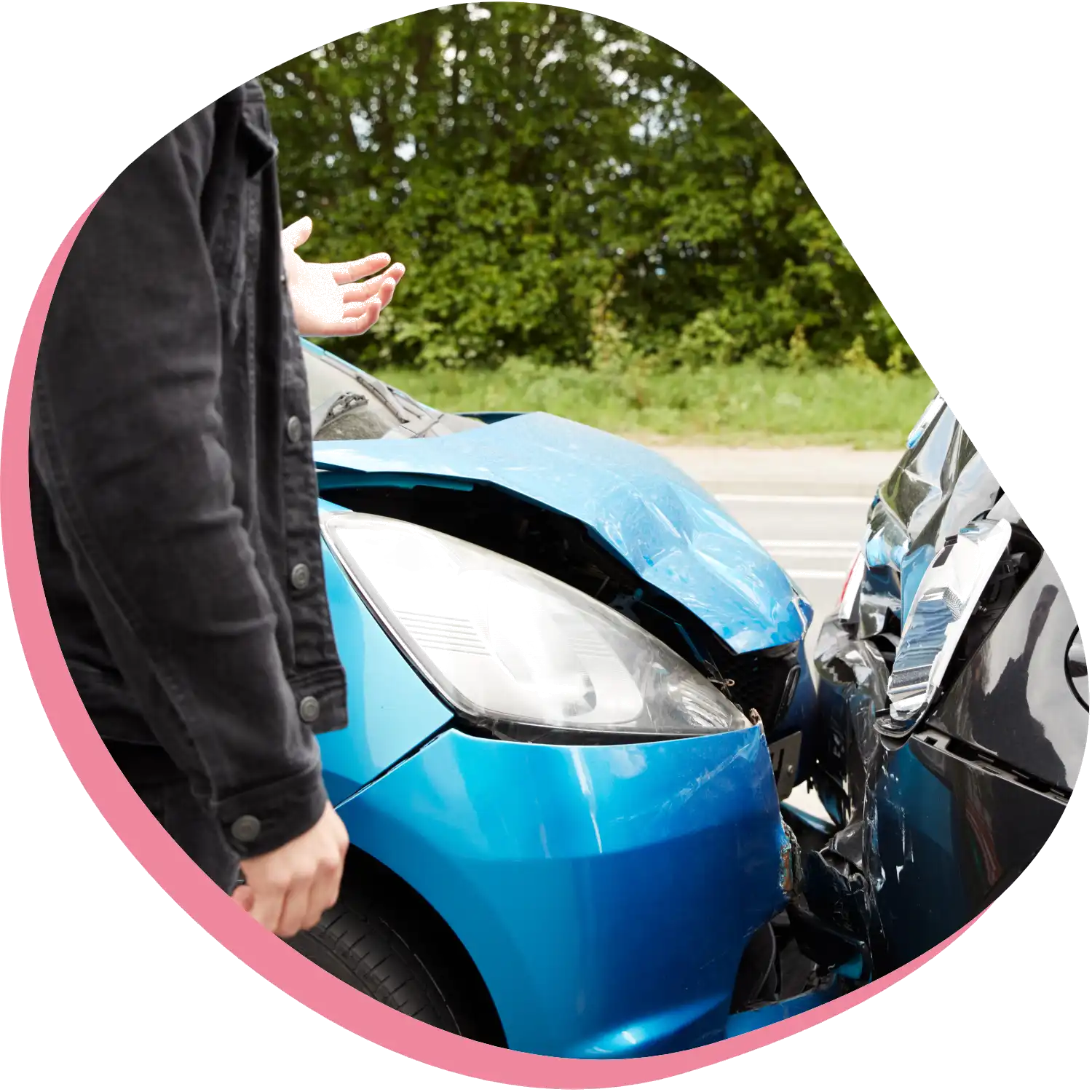Your Car Was Hit By an Uninsured Driver – What’s Next?
Learn more about what to do after an accident with an uninsured driver. We also discuss how to protect yourself with uninsured motorist coverage.




Your Car Was Hit By an Uninsured Driver – What’s Next?
Car accidents are stressful, but they become even more so when you find out the other party isn’t insured.
Even though state laws throughout the country require drivers to carry liability and property damage insurance, at least one research study found that 12.6% of motorists do not have auto insurance to pay claims arising from accidents when they are the at-fault driver.
That’s one out of every eight drivers on the road who do not have an insurance company available to pay your medical expenses or the cost of repairing your car. Don’t worry; there may be options available to recover compensation for bodily injuries and property damage if this has happened to you.
You’ll learn through reading this article about what to do when an uninsured driver causes an accident. You’ll also find out about the steps to take after a motor vehicle accident to protect your right to recover compensation as the victim of the negligence of another driver.
Apply NowKey Points
- Know how to protect your legal rights, including your right to obtain compensation.
- Understand the types of insurance coverage you need to protect yourself in an accident caused by an uninsured drive.
- Know the role a car accident attorney plays to enforce your rights when an accident is caused by an uninsured driver.
Get up to $500,000 With Rates as Low as 2.5% Simple, Monthly
Immediate action to take when involved in a car accident
It’s not uncommon for a driver to be confused or dazed at the scene of the accident in the moments immediately after a collision. That’s why you need to know in advance about the steps to take to protect yourself against further injury and to protect your legal rights.
The following steps will also be beneficial if the driver of the vehicle that crashed into you does not have auto insurance and you need to file an uninsured motorist claim:
- Stay calm and check yourself and other occupants of your vehicle for injuries: Your first instinct after a crash may be to get out of the car as quickly as possible, but instead, take a moment to calm down, collect your thoughts, and check yourself for injuries before moving around too much. Movement could actually make an injury worse, so remain in place until you know it’s safe to move. If you’re not sure, remain in the vehicle until help arrives in the form of the police, fire, or emergency medical personnel.
- Call the police: It does not matter whether you are injured or not; call the police to report the accident and establish an official record of the crash that may prove useful later as evidence to support your claim for compensation against an at-fault driver. Speak slowly and calmly when contacting the police. Give the emergency operator your name, the location of the accident and whether or not anyone has been injured. If your injuries prevent you from making the call, ask someone at the scene to make it for you.
- Remain at the scene: Do not leave the scene of an accident or move your vehicle until police arrive at the scene and give you permission to move your car or leave. While waiting for the police, get out of the roadway and away from your car to avoid being hit by passing vehicles. Move to a sidewalk or onto the shoulder of the road away from moving vehicles.
- Exchange contact information with other drivers and witnesses: In addition to getting the name and contact information of other drivers involved in the accident, you also should write down or photograph the license plates and vehicle identification numbers of all vehicles. If there are witnesses to the accident, obtain their contact information to pass on to your car accident attorney.
- Document the scene with photographs: Use the camera on your phone to take photos documenting the location of all vehicles, including visible damage to each one. Include photos of the roadway showing road markings, skid marks, and vehicle parts or debris. Also take pictures of buildings around the scene of the crash that may help your auto accident lawyer locate security cameras with images or video of the accident.
- Police report: Ask the police and emergency medical personnel for copies of accident and incident reports they created and maintain. If the reports are not available at the scene, ask when they will be available and the procedure for obtaining them.
- If you have the time and feel physically able to do so, take photos of police, fire, ambulance, and other emergency vehicles at the scene. These photos can be helpful to allow your lawyer to identify the agencies that need to be contacted to obtain reports and other information about the accident that could be useful for proving your claim for compensation.
Implications of being hit by an uninsured driver
An essential step to take after any car accident, but particularly one involving an uninsured driver, is to notify your car insurance company and give them details about the crash and the injuries or property damage that you incurred.
If an at-fault driver does not have insurance coverage or has only minimal coverage available to pay your medical bills and other financial losses, your own insurance company may cover the losses through the uninsured motorist coverage and underinsured motorist coverage of your car insurance policy.
When a driver causes an accident and does not have the liability insurance coverage to pay your claim, you could be stuck paying the following:
- Medical expenses, including the cost of medical treatment and care for your injuries in the future.
- Lost wages and lost or diminished earning capacity from being unable to work in the future.
- Legal fees to hire a car accident attorney to file a lawsuit against the at-fault driver that would be paid from an insurance settlement may have to be paid out of your own pocket.
- Cost of repairs to your car that would be paid by the insurance company for the driver responsible for causing a crash becomes your burden to pay.
If the driver responsible for causing an accident has assets, a lawsuit is required to obtain a judgment that gives you the legal right to have a marshal or sheriff seize and sell the assets to pay your claim. However, there is no guarantee that an uninsured or underinsured driver will have assets to seize.
Another implication of an accident with an uninsured driver is that your insurance company may increase the cost of the policy at renewal time. Unless you live in a state that prohibits insurance companies from increasing premiums for accidents that are not your fault, your rates could go up.
There may, however, be options available for you to obtain the compensation that you deserve after an accident with an uninsured driver.
Get Started
Apply today and get funds in as little as 24 hours!
Exploring compensation options after an accident
A lawsuit against a driver who does not have liability insurance coverage or assets to pay your damages may not be an option, but you should arrange for a free consultation with a car accident lawyer anyway. A review of the circumstances of the accident by a lawyer may reveal a third-party that could be held responsible.
For example, if your car is hit by a truck that was unable to stop because its brakes failed, your car accident lawyer may find evidence proving that the company that owned the vehicle failed to properly maintain it.
A lawsuit against the trucking company could provide the insurance coverage to pay your personal injury and property damage claims. Some of the options for recovering compensation, in addition to a third-party lawsuit or a lawsuit against the driver whose vehicle crashed into you, include the following:
- Uninsured motorist coverage: If your car insurance coverage includes uninsured motorist coverage, you can file a claim for payment of your losses through your own insurance company when the at-fault driver does not have insurance coverage or you are the victim of a hit-and-run accident. Your insurance company investigates the claim to determine that you were not at fault in causing the accident and that your insurance claim is supported by the evidence.
- Collision coverage: If you have collision coverage in your auto insurance policy, it will pay for damage to your vehicle regardless of who was at fault. Collision coverage may include a deductible that you must pay.
- Health insurance: If you have a health insurance policy, it may pay the costs of medical care for injuries sustained in an accident caused by an uninsured driver.
- No-fault states: Some states require that motorists have personal injury protection or PIP coverage to pay medical expenses for injuries sustained in a car accident regardless of who was at fault. Although it pays for your medical treatment, PIP does not pay pain and suffering compensation that you could recover in an insurance settlement against an at-fault motorist.
- Underinsured motorist coverage: When a motorist that causes a collision does not have enough insurance to pay your losses, you may file an insurance claim through the underinsured motorist coverage or UIM coverage of your own insurance policy.
A free consultation with a lawyer at a personal injury law firm is the best way to learn about the options available to you as the victim of a hit-and-run accident or when the at-fault driver does not have liability coverage.